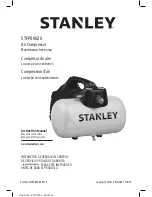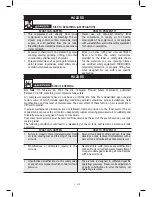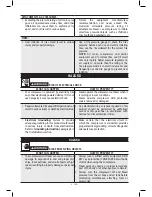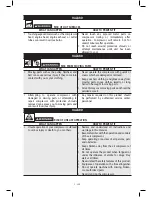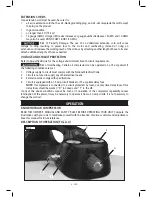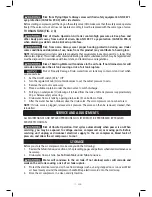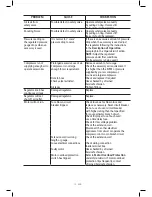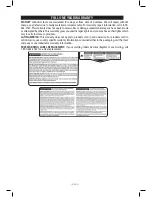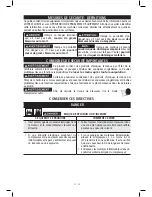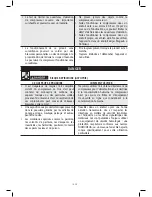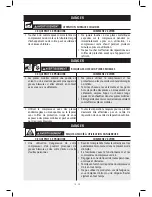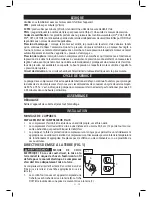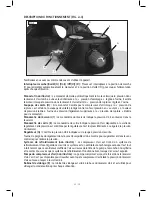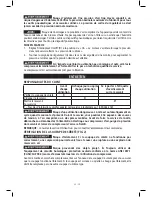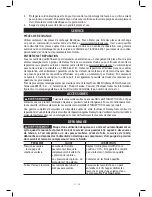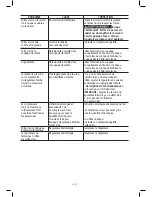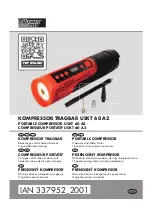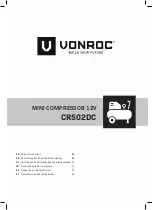
13 - ENG
PROBLEM
CAUSE
CORRECTION
Air leak from
safety valve.
Possible defect in safety valve. Operate safety valve manually
by pulling on ring. If valve still
leaks, it should be replaced.
Knocking Noise.
Possible defect in safety valve. Operate safety valve manually
by pulling on ring. If valve still
leaks, it should be replaced.
Pressure reading on
the regulated pressure
gauge drops when an
accessory is used.
It is normal for "some"
pressure drop to occur.
If there is an excessive amount of pressure
drop when the accessory is used, adjust
the regulator following the instructions
in the
Description of Operation
paragraph in the
Operation
Section.
NOTE:
Adjust the regulated
pressure under flow conditions
(while accessory is being used).
Compressor is not
supplying enough air to
operate accessories.
Prolonged excessive use of air. Decrease amount of air usage.
Compressor is not large
enough for air requirement.
Check the accessory air requirement. If
it is higher than the SCFM or pressure
supplied by your air compressor,
you need a larger compressor.
Hole in hose.
Check and replace if required.
Check valve restricted.
Have checked by a Trained
Service Technician.
Air leaks.
Tighten fittings.
Regulator knob has
continuous air leak.
Damaged regulator.
Replace.
Regulator will not
shut off air outlet.
Damaged regulator.
Replace.
Motor will not run.
Fuse blown, circuit
breaker tripped.
Check fuse box for blown fuse and
replace as necessary. Reset circuit breaker.
Do not use a fuse or circuit breaker
with higher rating than that specified
for your particular branch circuit.
Check for proper fuse. You should
use a time delay fuse.
Check for low voltage problem.
Check the extension cord.
Disconnect the other electrical
appliances from circuit or operate the
compressor on its own branch circuit.
Extension cord is wrong
length or gauge.
Check the extension cord.
Loose electrical connections.
Check wiring connection
inside terminal box.
Faulty motor.
Have checked by a Trained
Service Technician.
Motor overload protection
switch has tripped.
Refer to
Motor Overload Protection
under
Operation
. If motor overload
protection trips frequently, contact
a Trained Service Technician.
Summary of Contents for STFP00020
Page 43: ...43...

